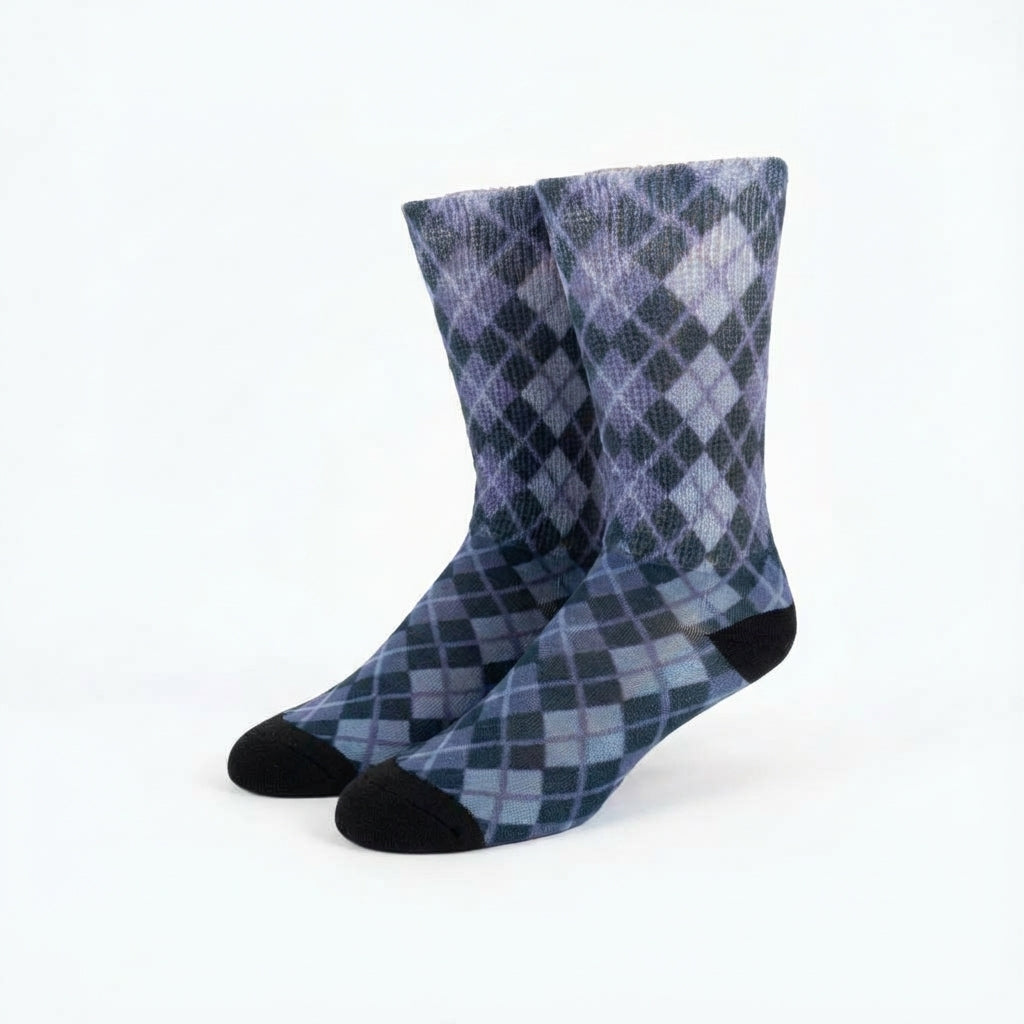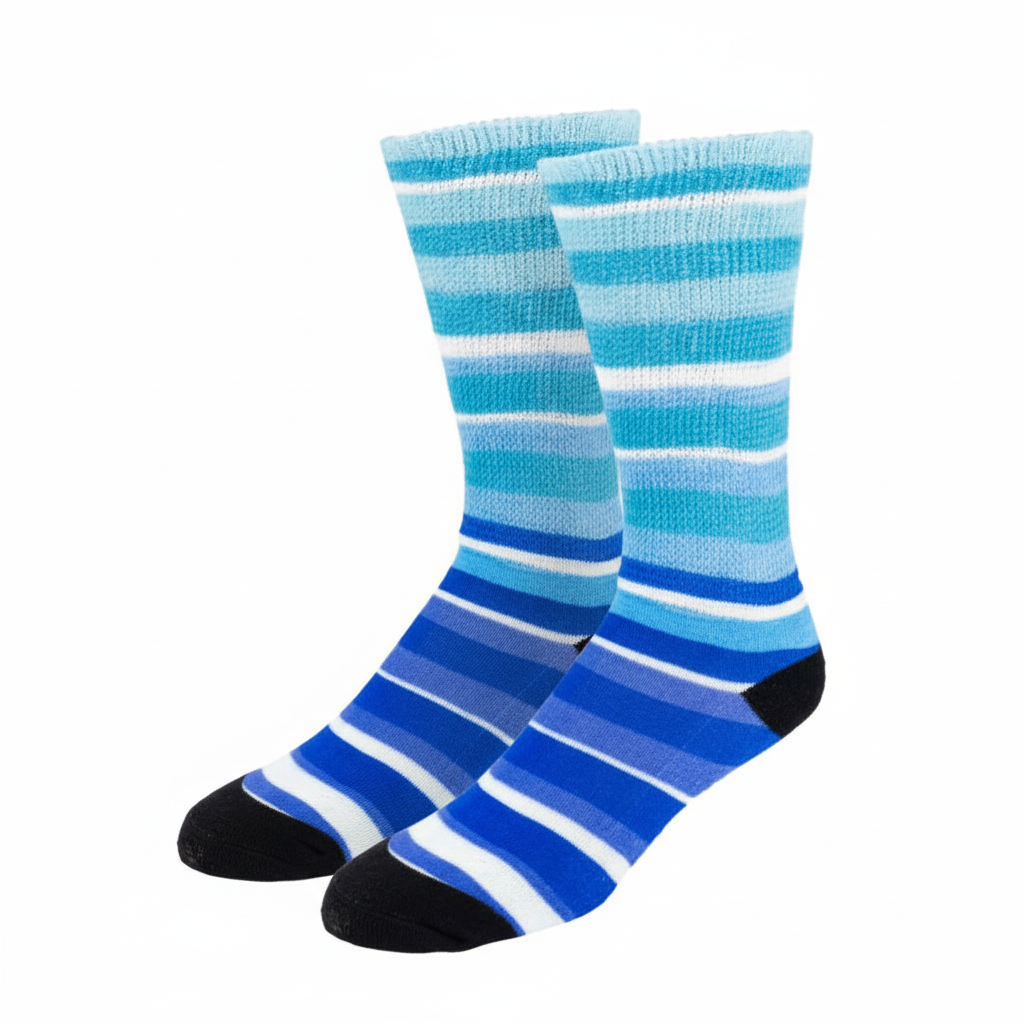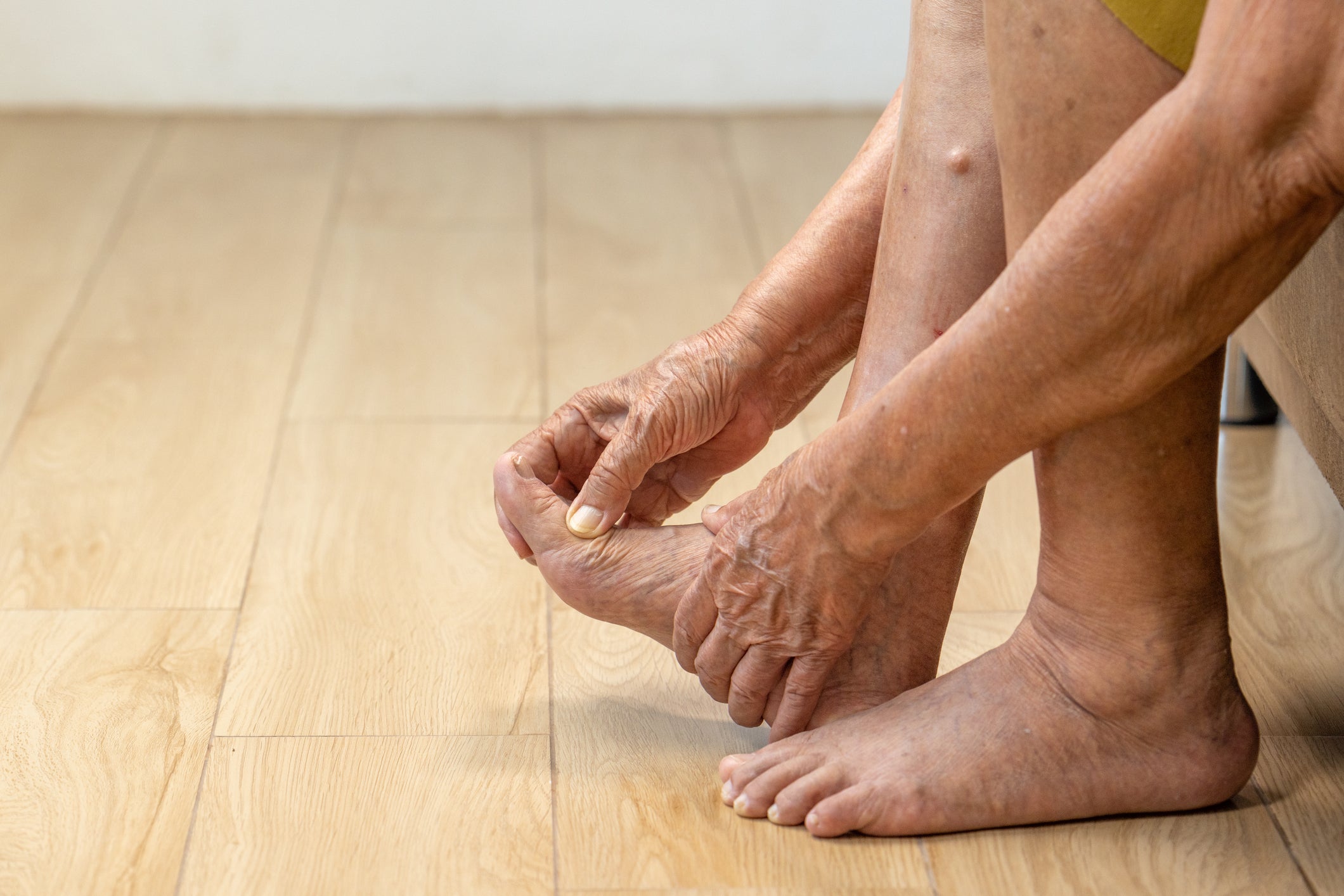Diabetic Socks - The Benefits, What They Do and Who Should Wear Them
We can manage and control diabetes, but there is no permanent cure. A check on dietary habits, regular exercise, the use of recombinant insulin preparations, and antiglycemic drugs can slow down the progression of the disease. These measures can also delay deadly complications such as retinopathy (causing vision loss), nephropathy (kidney damage), neuropathy (leading to limb numbness, toe-loss, foot damage), and cardiovascular diseases.
How are Diabetes Socks helpful?
Diabetes socks are guardian angels for your precious feet. They are specially designed non-compressing, close-fitted socks. Their padding effect cushions against harsh environmental exposures. They shield lower extremities from damp moisture, keeping them dry, avoid pricking injuries, and enhance blood flow. Physicians should advise the patients to wear socks within their footwear to resist the harmful friction and shear effects. [4] Moreover, research shows that mild compression diabetes socks decrease edema of ankles and calves without affecting blood circulation. [5]
Possible Benefits of Diabetes Socks
They have many properties to address different limb/foot issues. [6]
They come in all sizes and shapes. They may be of calf-length, extend over-the-knee, come as anklets or no-show styles.
The material they are made up of makes them the best foot companion. Let’s see how.
- Their moisture-wicking material repels moisture and kicks off fungal infections and foul odor.
- They have soft yarns made of delicate textured fabrics such as wool; with antimicrobial properties.
- Most of them are seamless, thus remove the rubbing effects that prevent blister formation.
- Non-elastic bindings eliminate the hazard of compression.
- Padded soles impart extra cushion against infections and wounds.
- In addition, some of them possess smart technology that can sense changes in the temperature and blood flow dynamics of your limbs.
Harmful Effects of Diabetes on Lower Extremities
Take care of your limbs. Why are those blisters there? Diabetes damages the small vessels of the limbs leading to peripheral neuropathy because of ischemia. [1] This neuropathy leads to numbness and loss of sensation in your feet. As a result, any minor cut, pebble prick, or needle injury would go unnoticed. The little breaks can get infected, leading to large wounds, blisters, toe-loss, foot-loss, or even limb amputation. At times, the ensuing gangrene can be fatal enough to cause death. Frightening? Get saving them now!
What is Diabetic Foot Care?
Revise with us: diabetes leads to blisters, foot ulcers, or even limb amputations. However, timely recognition and management of risk factors can avoid such adverse outcomes. Thanksgiving, highly effective guidelines are available.
- Keep your feet dry and clean
- Occasionally, soak them in salty water to let that excessive fluid come out and then dry them immediately
- Give them an oil massage once weekly to help augment the blood circulation
- Go through periodic neurological examination as advised by your physician
- Trim and clean your nails regularly
Diabetic Socks versus Compression Stockings
Compression stockings are tight-fitting, stretchy socks. They are used in patients with varicose veins, kidney failures, or heart problems. They have grades of, moderate, and severe compression. They help squeeze the lower limbs and return the pooled-up blood to the heart.
However, in diabetes, these may not be as useful as they can hinder the already diminished flow deteriorating the conditions. Thus, in diabetics, using soft diabetes socks is a safer option.
Are there any side effects of Diabetic Socks?
Diabetic socks are simple and harmless. However, their improper use can form wounds or blisters. Always choose the ones that fit the size and shape of your feet. [7] Take care of the hygiene otherwise, infections can invade. Beware the allergies. Seek the expert’s advice for your specific customized needs.
For how long do you need to use Diabetes Socks? The maintenance
You can use one pair for six to eight months. Wash them regularly, remove heaped-up fabric piles, and change the pair when the right time comes.
See all Diabetic Socks at Bamsocks.com
References
- Brown MJ, Asbury AK. Diabetic neuropathy. Annals of Neurology: Official Journal of the American Neurological Association and the Child Neurology Society. 1984 Jan;15(1):2-12.
- Fong DS, Contreras R. Glitazone use associated with diabetic macular edema. American journal of ophthalmology. 2009 Apr 1;147(4):583-6.
- Greene A, Meskell P. The impact of lower limb chronic oedema on patients' quality of life. International wound journal. 2017 Jun;14(3):561-8.
- Van Netten JJ, Lazzarini PA, Armstrong DG, Bus SA, Fitridge R, Harding K, Kinnear E, Malone M, Menz HB, Perrin BM, Postema K. Diabetic Foot Australia guideline on footwear for people with diabetes. Journal of Foot and Ankle Research. 2018 Dec;11(1):1-4.
- Wu SC, Crews RT, Skratsky M, Overstreet J, Yalla SV, Winder M, Ortiz J, Andersen CA. Control of lower extremity edema in patients with diabetes: double blind randomized controlled trial assessing the efficacy of mild compression diabetic socks. Diabetes research and clinical practice. 2017 May 1;127:35-43.
- National Institute of Diabetes and Digestive and Kidney Diseases. Diabetes and foot problems. Published January, 2017.
- Hirate H, Sobue K, Tsuda T, Katsuya H. Peripheral nerve injury caused by misuse of elastic stockings. Anaesthesia and intensive care. 2007 Apr 1;35(2):306-8.
- Cho S, Atwood JE. Peripheral edema. The American journal of medicine. 2002 Nov 1;113(7):580-6.







